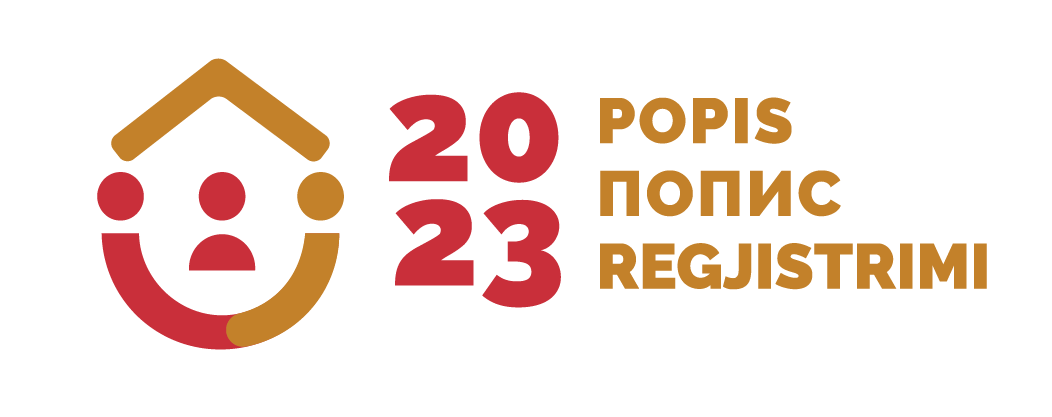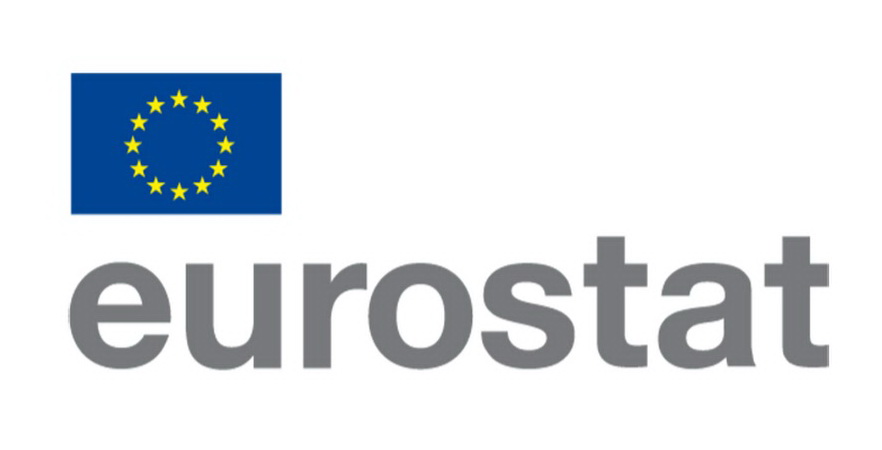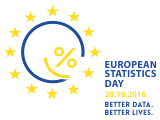| Category: |
Economic statistics |
| Area: |
National accounts |
| Survey / data collection: |
Gross national income |
Note: For any question on metadata, please contact MONSTAT metadata support.
| 1. Contact Vrh |
| 1.1. Contact organization: |
Statistical Office of Montenegro - MONSTAT |
| 1.2. Contact organization unit: |
Annual National Accounts Statistics Department |
| 1.2. Contact organization unit: |
IV Proleterske 2, 81000 Podgorica, Montenegro |
| 2. Metadata update Top |
| 2.1. Metadata last certified: | 1 December 2023 |
| 2.2. Metadata last posted: | 29 December 2023 |
| 2.3. Metadata last update: | 1 December 2023 |
| 3. Statistical presentation Top |
| 3.1. Data description: | Gross national income at market prices is equal GDP plus the primary income which resident units receive from the rest of the world less primary income payments from resident units to the rest of the world. Those are compensations of employees that residents receive from non-residents and pay to non-residents and property income receivable by residents and payable to non-residents. |
| 3.2. Classification system: | - The adopted standard is the European System of Accounts (ESA 2010). This is the most recent internationally compliant accounting framework for a systematic and detailed description of the economy. - KD 2010, which is harmonized with the European classification NACE Rev.2
- Balance of Payments and International Investment Position Manual, Sixth Edition (BPM6) |
| 3.3. Sector coverage: | The total national economy and the Rest of the world sector. |
3.4. Statistical concepts and
definitions: | GDP - Gross Domestic Product
GDP at market prices is the final result of the production activity of resident producers and is defined in three ways:
1. GDP by production approach is the sum of gross added value in all NACE sectors + Taxes less subsidies on products
Gross value added (GVA) = gross output minus the intermediate consumption.
2. GDP by expenditure approach is the sum of expenditures categories
a. Final consumption of households and non-profit institutions serving households
b. Government final consumption
c. Gross fixed capital formation
d. Changes in inventories
e. Exports of goods and services - Imports of goods and services
3. GDP by income approach
Compensation of employees + Gross operating surplus and mixed income + taxes less subsidies on production and imports
The transition from gross domestic product (GDP) to gross national income (GNI) is possible using data on primary income between residents and non-residents. Those are compensations of employees that residents receive from non-residents and pay to non-residents and property income receivable by residents and payable to non-residents. Transitional items from GDP to GNI are identical to the components of income in the Balance of Payments (BPM6).
Compensation of employees represents the total remuneration, in cash or in kind, which the employer pays to the employee for work that the employee has done during the accounting period.
Property income is created when the owners of financial assets and natural resources give financial and natural resources at the disposal to the other institutional units.
Income that occurs using the financial assets is called investment income, while income by the use of natural resources is called the rent.
Property income is the sum of investment income and rent. |
| 3.5. Statistical unit: | For the calculation of gross national income at market prices combine data from various statistical sources, and therefore there is no common reference framework for the sample.
ESA 2010 differs two types of unit and two ways of division of economy which serve to various analytical objectives:
- by grouping institutional units into sectors on the basis of their principal functions, behavior and objectives;
- by grouping of local business units in the activities on the basis of their activities. |
| 3.6. Statistical population: | The concept of statistical population cannot be strictly applied in the context of national accounts because national accounts combine data from different data sources. |
| 3.7. Reference area: | Montenegro |
| 3.8. Time coverage: | 2010-2021 |
| 3.9. Base period: | Not applicable |
| 6. Institutional mandate Top |
6.1. Legal acts and other
agreements: | The Law on Official Statistics and Official Statistical System (Official Gazette of Montenegro No 18/12 and 47/19) defines provisions for collection, processing, and dissemination of data.
The Law provides to the Statistical Office legal powers to collect and access the data necessary for the implementation of Programme and Annual Plan.
The Law gives a priority to the use of administrative data and right of access to individual data that are a result of survey of other official statistical producers.
As an annex to legal provisions, Statistical Office has signed several memoranda on cooperation with administrative data providers. |
| 6.2. Data sharing: | Signed agreement on cooperation with the official statistical producers:
1. Customs Administration
2. Tax Administration
3. Ministry of Finance
4. Central Bank of Montenegro
5. Trilateral agreement (MONSTAT, Ministry of Finance, and Central Bank of Montenegro)
International institutions:
1. EUROSTAT
2. UN organizations
3. IMF
4. World Bank |
| 7. Confidentiality Top |
| 7.1. Confidentiality - policy: | Articles 53-60 of the Law on Official Statistics and Official Statistical System (Official Gazette of Montenegro No 18/12 and 47/19) provide a framework for protection, use, and transmission of confidential data. Statistical office has produced two comprehensive rulebooks that cover the procedures for individual data protection as well as keeping individual records. With purpose of the meeting legal framework on functioning of security system and statistical confidentiality there was adopted the Rulebook on Keeping Statistical Data by which Manner, Time, Technical Conditions and Organization of Statistical Data Storage to Prevent Their Destroying, Misappropriation, and Unauthorized Use is Regulated as well as the Rulebook on Contents and Manner of Keeping Records on Users of Individual Statistical Data by which contents and manner of keeping records on users of individual statistical data is regular.
Pursuant to the Article 59, an access to the confidential data is limited to persons performing duties and tasks of official statistical producer and up to the stage the data are necessary for official statistical production. Persons that performs duties and tasks within official statistical producers must sign the statement on respecting the principle of confidentiality.
Law on Official Statistics and Official Statistical System is aligned with the Regulation No 223/2009 and the Regulation (EU) 2015/759 from 29 April 2015 that also regulate confidentiality provisions.
The Government of Montenegro adopted the Statement on Commitment of Confidence in Official Statistics (Commitment of Confidence). |
7.2. Confidentiality - data
treatment: | The treatment of data in respect of confidentiality is defined by the Law on Official Statistics and Official Statistical System, Articles 54-61 (Official Gazette of Montenegro No 18/12). |
| 8. Release policy Top |
| 8.1. Release calendar: | The Law on Official Statistics and Official Statistical System (Official Gazette of Montenegro No 18/12) stipulates that official statistical producers prepare, update, and publish Statistical Release Calendar. It is published on the website of Statistical Office not later than 20 December for the next year, for all official statistical producers that includes date of releasing statistical data. Any change in date of releasing in the Calendar is published in advance in accordance with the Procedure on Unplanned Revisions. |
| 8.2. Release calendar - access: | http://www.monstat.org/eng/page.php?id=12&pageid=12 |
| 8.3. User access: | General aim of official statistical producer is to meet the needs of users, and to make an access to statistical data to users in an understandable manner, simultaneously and under the same conditions. Statistical Office is obliged to produce and disseminate official statistics in objective, transparent and professional manner, so that all users are equally treated. |
| 10. Accessibility and clarity Top |
| 10.1. News release: | Press release of the Gross national income of Montenegro. http://www.monstat.org/cg/page.php?id=1366&pageid=1365 |
| 10.2. Publications: | Statistical Office publishes the following regular publications: 1. Statistical Yearbook, 2. Montenegro in figures, 3. Monthly statistical review. In addition to the above regular ones, Statistical Office publishes also additionally publications. Some of the most important additional publications are as it follows: 1. Women and Men in Montenegro, 2. the most often used statistical data. All publication published by Statistical Office are available at the following link: http://monstat.org/eng/publikacije.php |
| 10.3. Online database: | Not available. |
| 10.4. Micro-data access: | The Law on Official Statistics and Official Statistical System (Official Gazette of Montenegro No 18/12) regulates rules under which external users can obtain an access to individual data for needs of research. Article 58 defines types of scientific and research organizations that can obtain such data. Providing individual data without identifier is possible only upon a written request of scientific and research institutions, with purpose of performing scientific and research activities as well as international statistical organizations and statistical producers from other countries.
Research entity signs the agreement with Statistical Office, and it signs the statement on respecting the confidentiality principle.
Official statistical producers keeps a separate records on users and purpose of using the statistical data given to these users. |
| 10.5. Other: | In addition to press releases available on the official website of the Statistical Office, there are no other forms of dissemination. |
10.6. Documentation on methodology:
domain: | https://www.monstat.org/cg/page.php?id=1001&pageid=1001 |
| 10.7. Quality documentation: | The Law on Official Statistics and the Official Statistical System ("Official Gazette of Montenegro" No. 18/12 and 47/19) defines the commitment to quality, which ensures that producers of official statistics in Montenegro work and cooperate in accordance with international principles of quality of the statistical system.
In accordance with the ESS Quality Declaration, Article 338 of the Treaty on the Functioning of the EU, Regulations 759/2015 and 223/2009 and the European Statistics Code of Practice, the following documents are adopted:
1. Quality Strategy of the Statistical Office
2. Guide for the implementation of the Quality Strategy in the Statistical Office;
3. Implementation plan |
| 11. Quality management Top |
| 11.1. Quality assurance: | Statistical Office has chosen the implementation of elements of TQM (Total Quality Management) model that foster development and improvement of functioning of:
- Institution,
- Official statistical result production, and
- Individual.
Within middle-term deadline, Statistical Office has chosen the TQM implementation through the following objectives:
1. Strong commitment to users and other interested parties,
2. Quality statistical processes and products,
3. Professional orientation of staff members,
4. Constant improvements,
5. Reduction of overburden of reporting units. |
| 11.2. Quality assesment: | Not available. |
| 12. Relevance Top |
| 12.1. User needs: | International users:
- Eurostat,
- World Bank,
- UN organizations,
- International Monetary Fund
National users:
- Ministries and other public administration bodies,
-Local government, and
-Other local government bodies.
- Central bank,
- Non-governmental organizations,
- Students,
- Researchers,
- Media. |
| 12.2. User satisfaction: | The Statistical Office has adopted the Quality Management Strategy, the Guidebook to the Implementation of the Quality Management Strategy, as well as the Plan for the Implementation of the Quality Policy.
In order to measure the degree to which fulfills obligations towards users and within the new quality policy, the Statistical Office conducted User satisfaction survey.
The results of the survey are available on the Statistical Office website, link: http://monstat.org/uploads/files/2.%20Izvjestaj%20o%20zadovoljstvu%20korisnika%20ENG%20(Autosaved).pdf |
| 12.3. Completeness: | Not available |
| 13. Accuracy and reliability Top |
| 13.1. Overall accuracy: | The compilation of national accounts is a complex task that involves many different data sources and therefore it is not possible to provide simple measures of accuracy estimate. |
| 13.2. Sampling error: | Not applicable |
| 13.3. Non-sampling error: | Not applicable |
| 14. Timeliness and punctuality Top |
| 14.1. Timeliness: | Data are published in accordance with the Annual Plan of Statistical Survey and Statistical Release Calendar, end of september of current year for previous year data. |
| 14.2. Punctuality: | Not available |
| 15. Coherence and Comparability Top |
15.1. Comparability -
geographical: | By applying the Regulation (EC) No 549/2013 which regulates the application of ESA 2010 methodology as well as other international manuals and methodological recommendations enabled the geographical comparability of data of Montenegro with other countries. |
| 15.2. Comparability over time: | The data are comparable for the time series 2010-2021 by ESA 2010 methodology. |
15.3. Coherence - cross
domain: | Given that in the compilation of national accounts practically all statistical information and many other data are used, it is difficult to find an indicator that can be compared with the trends of GDP and other similar aggregates such as the gross national income. |
| 15.4. Coherence - internal: | Among the categories that are available in the national accounts it is required careful interpretation of the definition because they can be distinguished from other statistical surveys. |
| 17. Data revision Top |
| 17.1. Data revision - policy: | Statistical Office has adopted the revision policy and it is available on the website http://www.monstat.org/eng/page.php?id=1411&pageid=1411 |
| 17.2. Data revision - practice: | The revision policy was formally established on 25 July 2017. Prior to its official announcement, there was no explicitly specified schedule revision of national accounts data. |
| 18. Statistical processing Top |
| 18.1. Source data: | In the production of gross national income, data on gross domestic product and data from the primary income account of balance of payments are used. |
18.2. Frequency of data
collection: | Annual |
| 18.3. Data collection: | National accounts combine data from various statistical sources. Data collection techniques vary depending on the approach to the compilation, availability of data sources, timeliness of the publication of the aggregates and other factors. |
| 18.6. Adjustment: | Adjustment of data is done, if necessary, in cases where the concepts and definitions of data collected from various data sources are differ from concepts and definitions used in the system of national accounts. |







